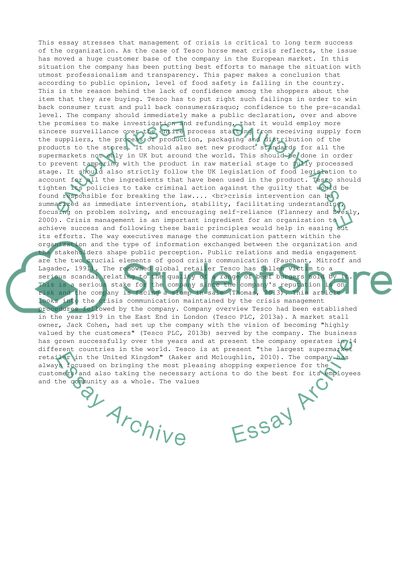Cite this document
(“The crisis management process Essay Example | Topics and Well Written Essays - 3000 words”, n.d.)
The crisis management process Essay Example | Topics and Well Written Essays - 3000 words. Retrieved from https://studentshare.org/business/1472923-tesco-horse-meat-crisis
The crisis management process Essay Example | Topics and Well Written Essays - 3000 words. Retrieved from https://studentshare.org/business/1472923-tesco-horse-meat-crisis
(The Crisis Management Process Essay Example | Topics and Well Written Essays - 3000 Words)
The Crisis Management Process Essay Example | Topics and Well Written Essays - 3000 Words. https://studentshare.org/business/1472923-tesco-horse-meat-crisis.
The Crisis Management Process Essay Example | Topics and Well Written Essays - 3000 Words. https://studentshare.org/business/1472923-tesco-horse-meat-crisis.
“The Crisis Management Process Essay Example | Topics and Well Written Essays - 3000 Words”, n.d. https://studentshare.org/business/1472923-tesco-horse-meat-crisis.


